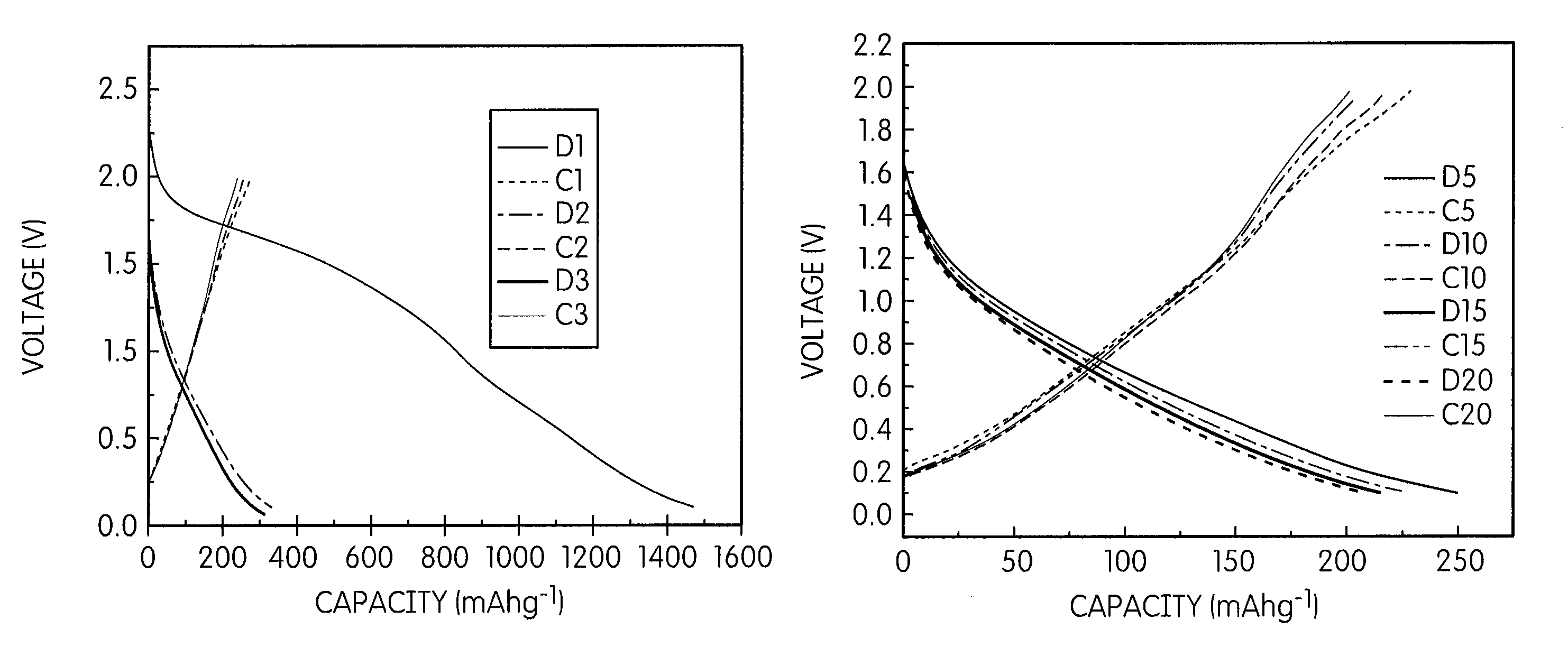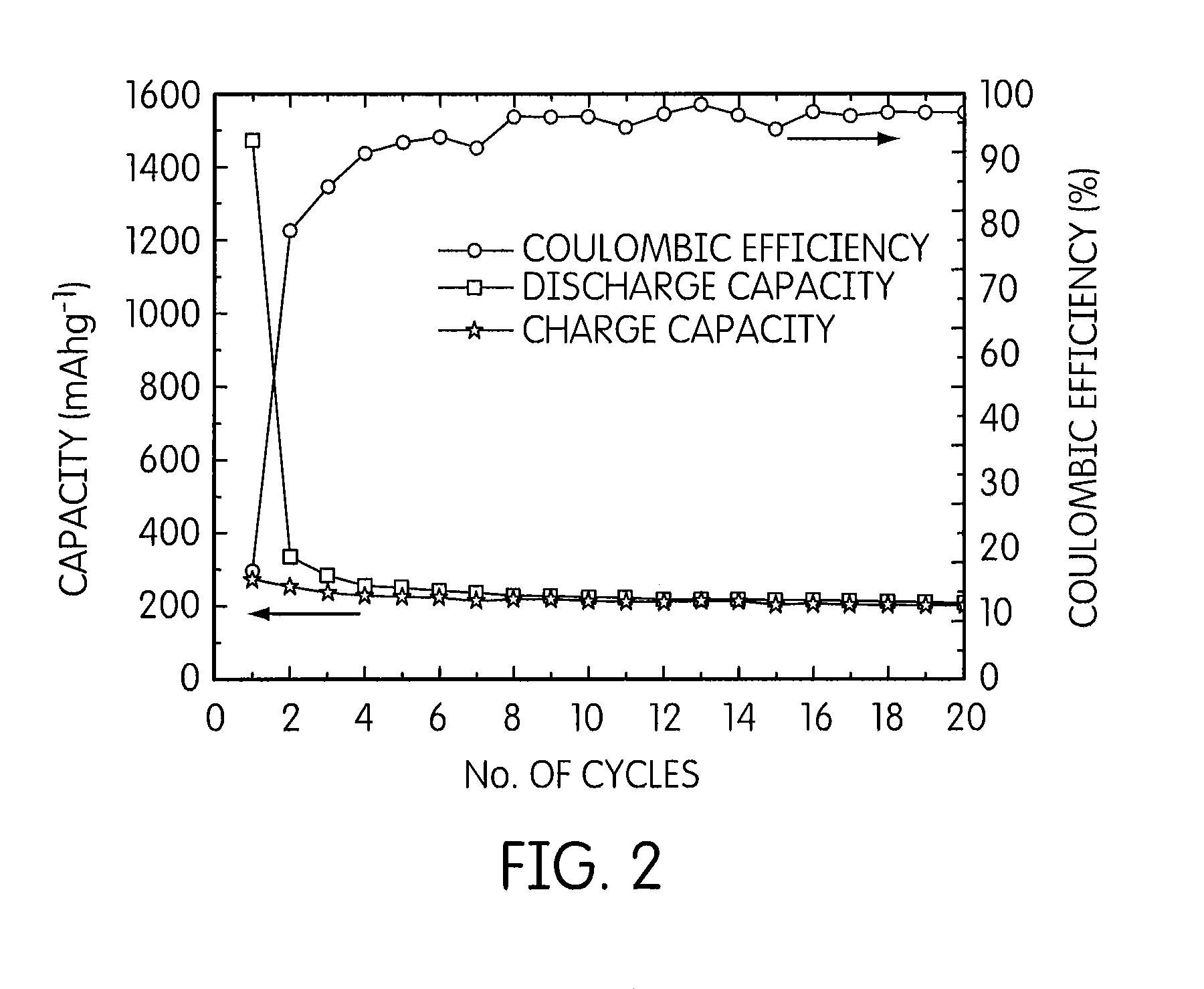Lithium batteries having anodes based on polythiocyanogen
a lithium ion battery and polythiocyanogen technology, applied in the direction of non-aqueous electrolyte cells, cell components, cell component details, etc., can solve the problems of limited overcharge protection, low volumetric energy density of graphite anodes, and low capacity of layered-oxide positive electrodes, and other problems, to achieve the effect of reducing the number of thermal runaway reactions, and reducing the number of layered oxide positive electrodes
- Summary
- Abstract
- Description
- Claims
- Application Information
AI Technical Summary
Benefits of technology
Problems solved by technology
Method used
Image
Examples
examples
Preparation of Polythiocyanogen, (SCN)x
[0039]Trithiocyanate, (SCN)3− was prepared by an electrochemical oxidation method as follows. Briefly, 65 ml of 1.0M NH4SCN in 0.5M H2SO4+65 ml MDC were taken in a 200 ml beaker-type electrochemical cell. Two graphite rods (1.0 cm diameter and 4.0 cm long) were used as the working as well as the counter electrodes. Constant-current electrolysis was carried out at 25 mA cm−2 current density for 3.0 hrs. Electrolysis was carried out at 2° C. by keeping the electrochemical cell in a constant temperature bath. After the electrolysis, the organic phase (MDC) was separated from the aqueous phase in a separating funnel, and dried over anhydrous sodium sulfate. The clear solution of (SCN)3− in MDC was transferred to a rotary vacuum evaporator over a water bath at 50° C. When all the solvent was evaporated, the (SCN)3− instantly polymerized into an orange-red solid. The solid was scraped from the evaporating flask, dried at 110° C. under vacuum, and us...
PUM
| Property | Measurement | Unit |
|---|---|---|
| charge | aaaaa | aaaaa |
| thick | aaaaa | aaaaa |
| thickness | aaaaa | aaaaa |
Abstract
Description
Claims
Application Information
 Login to View More
Login to View More - R&D
- Intellectual Property
- Life Sciences
- Materials
- Tech Scout
- Unparalleled Data Quality
- Higher Quality Content
- 60% Fewer Hallucinations
Browse by: Latest US Patents, China's latest patents, Technical Efficacy Thesaurus, Application Domain, Technology Topic, Popular Technical Reports.
© 2025 PatSnap. All rights reserved.Legal|Privacy policy|Modern Slavery Act Transparency Statement|Sitemap|About US| Contact US: help@patsnap.com



